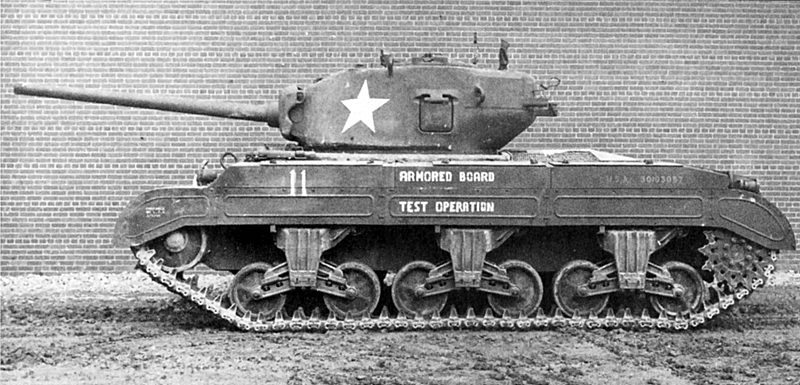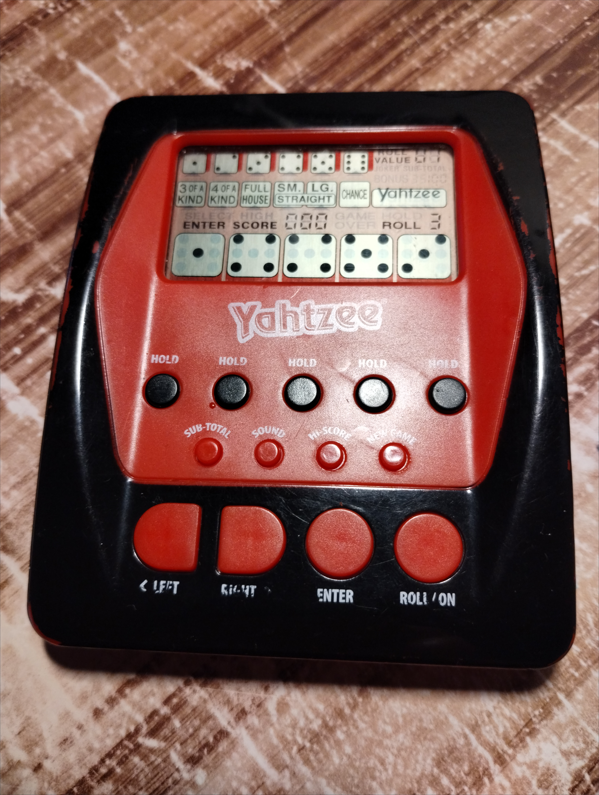|
TAC (video Game)
''T.A.C.'' (Tactical Armor Command) is a top-down tactical combat computer wargame published by Avalon Hill in 1983 for Apple II, Atari 8-bit computers, Commodore 64, and IBM PC. The game takes place during the Second World War and simulates clashes involving the United States, the USSR, Germany and the United Kingdom. Publication history ''TAC'' is a wargame designed by Ralph Bosson of Microcomputer Games, a division of Avalon Hill. The game was originally released for Apple II in 1983. It was later ported to Atari 8-bit, Commodore 64 and IBM PC. Description and gameplay ''TAC'' simulates, on a tactical scale, armored vehicle combat during the Second World War. It can be played by a single player against the computer at four different difficulty levels, or against another player simultaneously on the same computer. Scenarios The game offers five different scenarios: # A standard engagement between the two forces. # An attack against a defensive position that is protected b ... [...More Info...] [...Related Items...] OR: [Wikipedia] [Google] [Baidu] |
Microcomputer Games
Avalon Hill Games Inc. is a game company that publishes wargames and strategic board games. It has also published miniature wargaming rules, role-playing games and sports simulations. It is a subsidiary of Hasbro, and operates under the company's "Hasbro Gaming" division. Avalon Hill introduced many of the concepts of modern recreational wargaming, including the use of a hexagonal grid (a.k.a. hexgrid) overlaid on a flat folding board, zones of control (ZOC), stacking of multiple units at a location, and board games based upon historical events. History The Avalon Game Company Avalon Hill was started in 1952 outside Baltimore in Catonsville, Maryland by Charles S. Roberts under the name of "The Avalon Game Company" for the publication of his game ''Tactics''. It is considered the first of a new type of war game, consisting of a self-contained printed map, pieces, rules and box designed for the mass-market. Other war games published over the prior half-century, which Robert ... [...More Info...] [...Related Items...] OR: [Wikipedia] [Google] [Baidu] |
M26 Pershing
The M26 Pershing was a heavy tank/medium tank of the United States Army. It was used in the last months of World War II during the Invasion of Germany and extensively during the Korean War. The tank was named after General of the Armies John J. Pershing, who led the American Expeditionary Force in Europe in World War I. The M26 was intended as a replacement of the M4 Sherman, but a prolonged development period meant that only a small number saw combat in Europe. Based on the criteria of firepower, mobility, and protection, US historian R. P. Hunnicutt ranked the Pershing behind the German Tiger II heavy tank, but ahead of the Tiger I heavy and Panther medium tanks. It was withdrawn in 1951 in favor of its improved derivative, the M46 Patton, which had a more powerful and reliable engine and advanced suspension. The lineage of the M26 continued with the M47 Patton, and was reflected in the new designs of the later M48 Patton and M60 Patton. Production history Development ... [...More Info...] [...Related Items...] OR: [Wikipedia] [Google] [Baidu] |
DOS Games
The index of MS-DOS MS-DOS ( ; acronym for Microsoft Disk Operating System, also known as Microsoft DOS) is an operating system for x86-based personal computers mostly developed by Microsoft. Collectively, MS-DOS, its rebranding as IBM PC DOS, and a few oper ... compatible video games is split into multiple pages because of its size. To navigate by individual letter use the table of contents below. This list contains games. Notes {{DEFAULTSORT:DOS games Indexes of video game topics Lists of PC games ... [...More Info...] [...Related Items...] OR: [Wikipedia] [Google] [Baidu] |
Computer Wargames
A computer wargame is a wargame played on a digital device. Descended from board wargaming, it simulates military conflict at the tactical, operational or strategic level. Computer wargames are both sold commercially for recreational use and, in some cases, used for military purposes. History Computer wargames derived from tabletop wargames, which range from military wargaming to recreational wargaming. Wargames appeared on computers as early as '' Empire'' in 1972. The wargaming community saw the possibilities of computer gaming early and made attempts to break into the market, notably Avalon Hill's Microcomputer Games line, which began in 1980 and covered a variety of topics, including adaptations of some of their wargames. In February 1980 Strategic Simulations, Inc. (SSI) was the first to sell a serious, professionally packaged computer wargame, '' Computer Bismarck'', a turn-based game based on the last battle of the battleship ''Bismarck''. Wargame designer Gar ... [...More Info...] [...Related Items...] OR: [Wikipedia] [Google] [Baidu] |
Commodore 64 Games
{{short description, None This is a list of games for the Commodore 64 personal computer system, sorted alphabetically. See Lists of video games for other platforms. Because of the length of the list, it has been broken down to two parts: * List of Commodore 64 games (A–M) * List of Commodore 64 games (N–Z) See also * Commodore 64 Games System * Commodore 64 ... [...More Info...] [...Related Items...] OR: [Wikipedia] [Google] [Baidu] |
Apple II Games
An apple is an edible fruit produced by an apple tree (''Malus domestica''). Apple trees are cultivated worldwide and are the most widely grown species in the genus ''Malus''. The tree originated in Central Asia, where its wild ancestor, ''Malus sieversii'', is still found today. Apples have been grown for thousands of years in Asia and Europe and were brought to North America by European colonists. Apples have religious and mythological significance in many cultures, including Norse, Greek, and European Christian tradition. Apples grown from seed tend to be very different from those of their parents, and the resultant fruit frequently lacks desired characteristics. Generally, apple cultivars are propagated by clonal grafting onto rootstocks. Apple trees grown without rootstocks tend to be larger and much slower to fruit after planting. Rootstocks are used to control the speed of growth and the size of the resulting tree, allowing for easier harvesting. There are more th ... [...More Info...] [...Related Items...] OR: [Wikipedia] [Google] [Baidu] |
1983 Video Games
The year 1983 saw both the official beginning of the Internet and the first mobile cellular telephone call. Events January * January 1 – The migration of the ARPANET to TCP/IP is officially completed (this is considered to be the beginning of the true Internet). * January 24 – Twenty-five members of the Red Brigades are sentenced to life imprisonment for the 1978 murder of Italian politician Aldo Moro. * January 25 ** High-ranking Nazi war criminal Klaus Barbie is arrested in Bolivia. ** IRAS is launched from Vandenberg AFB, to conduct the world's first all-sky infrared survey from space. February * February 2 – Giovanni Vigliotto goes on trial on charges of polygamy involving 105 women. * February 3 – Prime Minister of Australia Malcolm Fraser is granted a double dissolution of both houses of parliament, for elections on March 5, 1983. As Fraser is being granted the dissolution, Bill Hayden resigns as leader of the Australian Labor Party, and in the subs ... [...More Info...] [...Related Items...] OR: [Wikipedia] [Google] [Baidu] |
Electronic Games
An electronic game is a game that uses electronics to create an interactive system with which a player can play. Video games are the most common form today, and for this reason the two terms are often used interchangeably. There are other common forms of electronic game including handheld electronic games, standalone systems (e.g. pinball, slot machines, or electro-mechanical arcade games), and exclusively non-visual products (e.g. audio games). Teletype games The earliest form of computer game to achieve any degree of mainstream use was the text-based Teletype game. Teletype games lack video display screens and instead present the game to the player by printing a series of characters on paper which the player reads as it emerges from the platen. Practically this means that each action taken will require a line of paper and thus a hard-copy record of the game remains after it has been played. This naturally tends to reduce the size of the gaming universe or alternatively to r ... [...More Info...] [...Related Items...] OR: [Wikipedia] [Google] [Baidu] |
Flak 88
The 8.8 cm Flak 18/36/37/41 is a German 88mm anti-aircraft and anti-tank artillery gun, developed in the 1930s. It was widely used by Germany throughout World War II and is one of the most recognized German weapons of the conflict. Development of the original model led to a wide variety of guns. The name applies to a series of related guns, the first one officially called the ''8.8 cm Flak 18'', the improved ''8.8 cm Flak 36'', and later the ''8.8cm Flak 37''. Flak is a contraction of German ''Flugabwehrkanone'' (also referred to as ''Fliegerabwehrkanone'') meaning "aircraft-defense cannon", the original purpose of the weapon. In English, "flak" became a generic term for ground anti-aircraft fire. In informal use, the guns were universally known as the ''Acht-acht'' ("eight-eight") by Germans and the "eighty-eight" by the Allies. Air defense units were usually deployed with either a Kommandogerät ("command device") fire control computer or a portable Würzburg ... [...More Info...] [...Related Items...] OR: [Wikipedia] [Google] [Baidu] |
BYTE (magazine)
''Byte'' (stylized as ''BYTE'') was a microcomputer magazine, influential in the late 1970s and throughout the 1980s because of its wide-ranging editorial coverage. "''Byte'' magazine, the leading publication serving the homebrew market ..." ''Byte'' started in 1975, shortly after the first personal computers appeared as kits advertised in the back of electronics magazines. ''Byte'' was published monthly, with an initial yearly subscription price of $10. Whereas many magazines were dedicated to specific systems or the home or business users' perspective, ''Byte'' covered developments in the entire field of "small computers and software", and sometimes other computing fields such as supercomputers and high-reliability computing. Coverage was in-depth with much technical detail, rather than user-oriented. The company was purchased by McGraw-Hill in 1979, a watershed event that led to the rapid purchase of many of the early computer magazines by larger publishers. By this time t ... [...More Info...] [...Related Items...] OR: [Wikipedia] [Google] [Baidu] |
Jerry Pournelle
Jerry Eugene Pournelle (; August 7, 1933 – September 8, 2017) was an American scientist in the area of operations research and human factors research, a science fiction writer, essayist, journalist, and one of the first bloggers. In the 1960s and early 1970s, he worked in the aerospace industry, but eventually focused on his writing career. In an obituary in ''Gizmodo'', he is described as "a tireless ambassador for the future." Pournelle's hard science fiction writing received multiple awards. In addition to his solo writing, he wrote several novels with collaborators including Larry Niven. Pournelle served a term as President of the Science Fiction and Fantasy Writers of America. Pournelle's journalism focused primarily on the computer industry, astronomy, and space exploration. From the 1970s until the early 1990s, he contributed to the computer magazine ''Byte'', writing from the viewpoint of an intelligent user, with the oft-cited credo, "We do this stuff so you won't ... [...More Info...] [...Related Items...] OR: [Wikipedia] [Google] [Baidu] |





